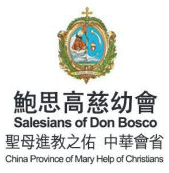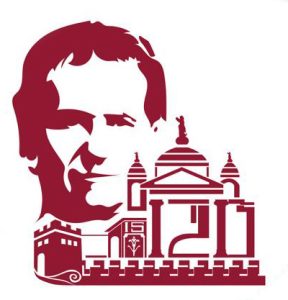
【慈幼通訊社 ─ 2023 年4月 21 日羅馬慈幼總部訊】 ─ 「《慈幼會會刊(the Salesian Bulletin)》(現中文名稱為《鮑思高家庭通訊》)已有146年歷史,但仍展現令人驚訝的活力。這應歸功於其創立者,有著對未來的驚人而敏銳的視野。」我們所講的鮑思高家庭通訊,是鮑思高具傳意天賦的產物。
Fr. Bruno Ferrero
鮑思高是天生的傳播人,是純種而不受制止的傳播人。在社會傳播方面,他自我改良,變得比他的觀念更現代,並發明預防教育法。他展示出對工業文明的深切了解,對此他原則上是很不同意的。正如所有偉大傳播人一樣,他吸引一些人,並令一些人懼怕。在他死後135年,這種效果仍然持續下去。
這源自僅印一面的大幅紙張,起初的名稱不太切合:Bibliofilo Cattolico(天主教愛書人),他將之改作慈幼會會刊(鮑思高家庭通訊)。通訊(Bulletin)一詞,根據字典,解作「公眾性質的官方媒體出版物,這個詞有一個高貴的來源。它的字源Bull,解作用以標記公眾文書或重要文件的封蠟或印章,例如教宗的印章。這個詞在今時今日仍然使用:醫學報、戰事報等。這適合於實而不華的經營方式。因此為鮑思高所選用。」
我們可以看看在第一期中,鮑思高向協進慈幼會士,即家庭通訊的首批讀者所寫的,以及向他們呈上的,這雜誌的根本目標與內容:
良善而名實相符的協進慈幼會士,一本月刊根據我們的內部章程創立了,這本月刊的出版,適時向你們講解,為滿全我們所倡議的目的、所做的或應做的事情。讓我們跟隨同一的渴望,使每人都能藉著與聖神的共融,把我們對人們的邀請,一致地走向同一目標:光榮天主,造福社會。為此,我們應善用這通訊。這通訊過往數年,是由我們在都靈的印書館所印製的,為了未來的需要,將會遷往位於Sampierdarena的聖雲先收容所印製。我們的家庭通訊將會闡述:
1. 會員或他們的指導司鐸,為個別或整體會員的益處,所制定的事項,這些事項將會成為協進慈幼會士的行事規則。
2. 為會員的益處所詳述的事實,可成為他人的榜樣。接著就是所見所聞的篇章:一切與人性及宗教的益處相關的;有關傳教士在亞洲、澳洲所進行的福傳事業,並尤其是散居於南美洲部落地區慈幼會士所做的,一切相關的新聞及書信,這對我們都是合適的題材。
3. 不同事項的溝通與宣佈、所倡議的計劃、值得宣揚的書籍及格言,這是家庭通訊的第三部份。
鮑思高從不排除任何人。因此家庭通訊要送到所有鮑思高的好友,以及那些認識他,能與他成為好友的人。我們可以由此聯想到由圓心所發出的一連串同心圓,這就是最有效的傳送方式:「口碑」。
伯多祿•史迪拉神父(Fr. P. Stella)在他一部作品中寫道:「可以說,透過鮑思高家庭通訊的大量發送……使鮑思高這位超凡的人物,在世界展現出來。1874年起,慈幼會士所建構的修會,已達到區域性幅度。尤其是在1880年代以後,加入鮑思高旗下的神職及平信徒會士數目,增長速度更快,在不同城市及國家的會院數目倍增。」(史迪拉,鮑思高1968)
根據聖鮑思高的直覺,鮑思高家庭通訊不僅是事件的匯集,更是透過敍述事件及工作,道出修會的精神,這比傳送一些抽象地展現的意念更好。家庭通訊提供一個以慈幼會角度,閱覽當代事件的機會,並歡迎青年及普世教會的激勵,共同建設一個更全球性的教育及牧民事業。
Salesian Bulletin: perennial relevancy of a magazine at the service of the charism
(ANS – Rome–RMG, 21 April 2023) – “It’s 146 years old, but the Salesian Bulletin has retained an amazing vitality. All credit is due to its inventor, who had an astonishing, acute vision of the future.” We are talking about the Salesian Bulletin, a creature born of Don Bosco’s communicative genius.
Fr. Bruno Ferrero
Don Bosco was a born communicator. Purebred, irrepressible. In communication, he modified himself, became more modern than his ideas, invented pedagogies. He showed that he understood well the industrial civilization, of which he was an enemy in principle. And like all great communicators, he attracted some and frightened others. 135 years after his death, that effect continues.
It all begins with a broadsheet with the unlikely title Bibliofilo Cattolico (Catholic Bibliophile); he changed it to Bolletino Salesiano. The word bulletin, according to the dictionary, means “an official publication of communications of a public nature. It had noble origins. It derived from “bull”, imprint of the seal or stamp with which public writings and solemn documents were marked. Papal Bulls, for instance. And it is still used today for practical purposes: medical bulletins, war bulletins. It suits a practical, no-frills, managerial style. This is why Don Bosco liked it.
In what we can consider the editorial of its first issue, Don Bosco writes to the Salesian Cooperators, identified as the first recipients of the Bulletin, and presents them with the fundamental objectives and contents of the magazine:
In our Bylaws, Good and Deserving Cooperators, a monthly Bulletin is prescribed, which in due time would be published to give you an account of things done or to be done in order to obtain the end we have proposed. Let us now follow the common desire, so that each one may lend his work with unity of spirit and direct our solicitations unanimously to one point: The glory of God, the good of Civil Society. For this purpose, we judge to make use of the Bulletin, one which has been printed for some years now in our printing house in Turin and which for the future will be printed in the Hospice of St. Vincent in Sampierdarena. This bulletin of ours will expound:
1. The things that the members or their Directors judge to propose for the general and particular good of the members, which will be followed by the practical rules for Cooperators.
2. Exposition of facts that were fruitful to the members and that can serve as an example to others. Then the episodes that happened, heard, read: as long as they are connected with the good of humanity and religion; the news and letters of the Missionaries who work for the faith in Asia, Australia, and especially of the Salesians, who are scattered in South America in the vicinity of the tribes, is an appropriate subject for us.
3. Communications, announcements of different things, proposed works; books and maxims to be propagated, are the third part of the Bulletin.”
Don Bosco never excluded anyone. That is why the Bulletin is addressed to all friends of Don Bosco and to those who, knowing him, could become friends of his. One might imagine a series of concentric circles rippling out from the centre, by the most effective means of dissemination: “word of mouth.”
Fr. Pietro Stella wrote in one of his publications, “It can be said that the SB, the many circulars sent… determined the worldwide discovery of Don Bosco, an extraordinary man. Until 1874, the Salesians constituted a congregation with a regional radius. After that date, especially after 1880, the young men recommended to Don Bosco by clergy and laity became more frequent, the requests for houses in various cities and nations multiplied.” (Stella, Don Bosco, 1968).
According to Don Bosco’s intuition, the Salesian Bulletin is not a mere chronicle of events, but divulges the spirit of the Congregation through the narration of facts and works, rather than through dissemination of speculatively demonstrated ideas. It offers a reading of contemporary reality from the Salesian point of view and welcomes the provocations of the youth and ecclesial world in view of a more global educational and pastoral project.


